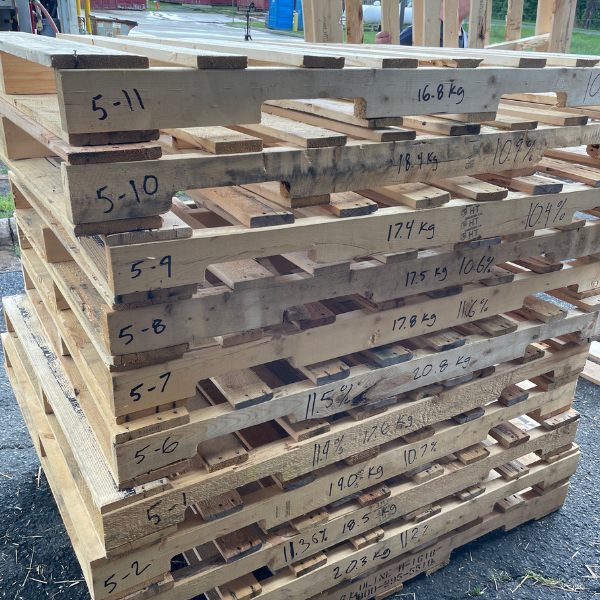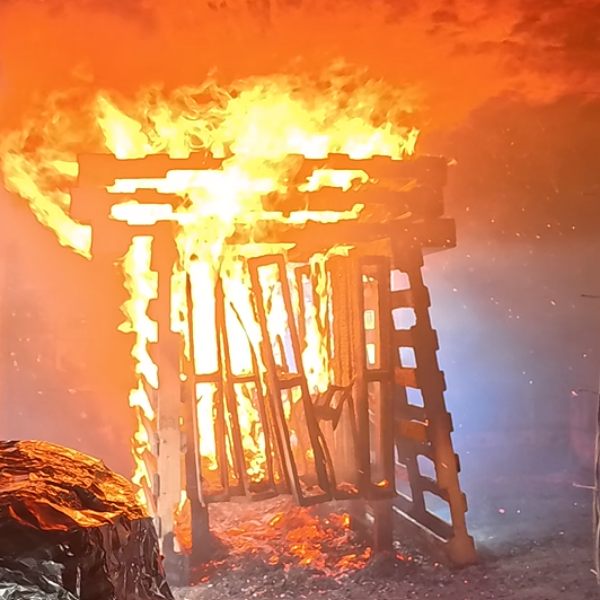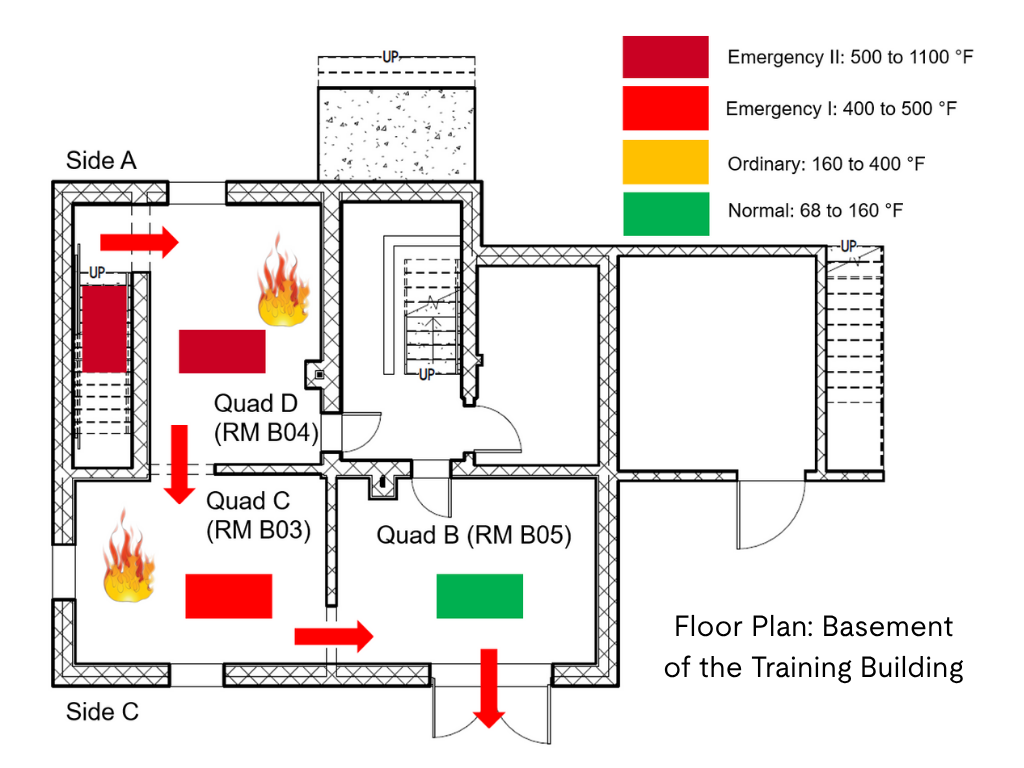
Research Report Available: Analysis of Firefighting Training Near Miss Incident
UL Research Institute’s Fire Safety Research Institute released a technical report analyzing the October 2024 live fire training near miss incident at Fairfax County Fire and Rescue Department. This report accompanies a comprehensive investigation report and a summary video developed by the FCFRD, which together provide a transparent account of what occurred during the training exercise that resulted in a firefighter injury and outline actionable recommendations to improve safety protocols.
Conducting a Science-Driven Firefighter Training Investigation
On October 13, 2024, a firefighter from FCFRD sustained burn injuries during a live fire training evolution at the department’s Training Academy. The evolution involved a firefighter entering the burn building with a 2.5-gallon pressurized water extinguisher. The firefighter’s goal was to move from the first level down to the basement and suppress three different fuel packages along the path but sustained a thermal burn injury during the evolution.
In response, FCFRD initiated a comprehensive investigation to understand what happened, identify contributing factors, and improve safety protocols. The department formed a Significant Incident Investigation Team and brought in ULRI’s fire safety experts to support the SIIT. ULRI researchers conducted a series of live fire experiments to recreate the conditions of the incident and investigate how different variables influenced the thermal environment inside the Fairfax County burn building.
Experimental Insights: Fuel Load, Ventilation, and Suppression in Firefighter Training
During the live fire experiments, researchers examined the size and configuration of fuel packages (such as the number of wooden pallets burned), the sequence of burns, the ventilation setup, and the effectiveness of pressurized water extinguishers. Each variable was carefully controlled and measured to understand its impact on heat levels, fire growth, and firefighter exposure.


These findings helped clarify how these elements interact in a training environment and informed recommendations for safer, more effective live fire training design. Thermal mapping of the burn building also provided insight into temperature distributions and the firefighter’s path of travel, supporting analysis of exposure risk and tactical decision-making.

“This was a powerful example of how science can help us understand the details of a near miss incident during training and guide meaningful change. Fairfax County’s leadership in initiating this investigation shows a deep commitment to firefighter safety and a willingness to learn and share those lessons with others.”
—Dan Madrzykowski
Senior Research Director
UL Research Institutes | Fire Safety Research Institute
Key Findings and Recommendations for Safer Firefighting Training
The investigation revealed a complex set of operational, procedural, and cultural factors that contributed to the incident. This collaborative effort reflects FCFRD’s commitment to transparency, accountability, and continuous improvement.
Key recommendations from the SIIT and ULRI’s analysis include:
- Establish a formal process for reviewing and approving training plan modifications.
- Conduct pre-drill briefings to ensure clarity of objectives and roles.
- Standardize training and use of pressurized water cans.
- Adjust fuel loads to match training objectives and suppression capabilities.
- Improve documentation and oversight of live fire training scenarios.
- Reinforce a culture of safety and accountability across all training operations.
- Enhance understanding of PPE performance and thermal exposure risks.
- Strengthen rehab and medical assessment protocols during training.
To learn more, download ULRI’s technical report recapping the experimental findings. This resource is designed to help departments nationwide learn from this incident and take proactive steps to prevent future injuries.

